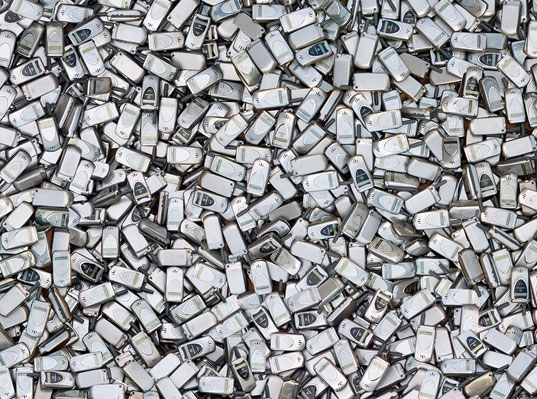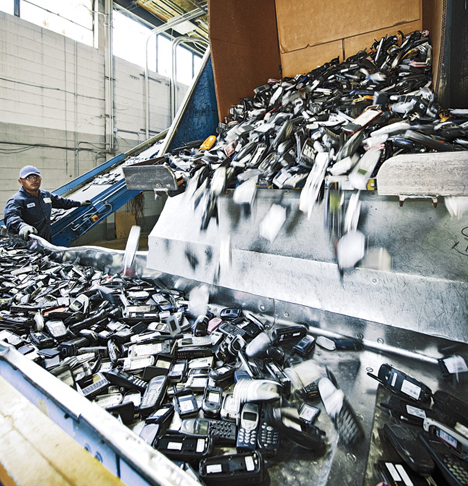
Over 1.6 billion cell phones were made last year. With an average cell phone life-span of only 18 months, we’ll see similar, if not higher, numbers made in years to come. But after 18 months of use, where do those 1.6 billion phones end up?
In most cases, the bottom of a dresser drawer, and eventually, in a landfill. Since cell phones typically contain hazardous materials, such as lead and mercury, it is important that we find and promote a safe, efficient way to recycle and dispose of them. Sadly however, currently only 10 percent of cell phones in the U.S. are recycled.
In a city of 8 million people and nearly 7 million cell phones (estimate based on a study by PEW Internet that determined 87% of Americans owned at least one cell phone in 2012), New York City is unavoidably a contributor to cell phone pollution. However, the city and the state have been making excellent strides in attempting to prevent further cell phone waste.

Passed in 2011, the New York State Electronic Equipment Recycling and Reuse Act states that all cell phone service providers and manufacturers in New York are required by law to accept cell phones for recycle or reuse from any person at no cost.
In other words, any person looking to throw away their old phone can walk into the store of their wireless provider, hand over their phone to the appropriate personnel, and at no cost, the store is then required to properly recycle your cell phone.
Sprint, which has teamed up with Recyclecorps and Valutech, has become the leading wireless provider in cell phone recycling and reuse. As a way to encourage recycling, Sprint now gives store credit to their clients who turn in their old phones for recycling in their Sprint Buyback program.
GrowNYC.org also offers cell phone collection, as well as the recycling of rechargeable batteries, at several greenmarkets around the city.
[youtube http://www.youtube.com/watch?v=OyvvKek671Q?feature=player_embedded&w=640&h=360]
In addition, many cell phone providers have made mobile device recycling more attractive by taking net proceeds from recycled phones and channeling the funds into charities and fundraisers. For example, Verizon’s Hopeline donates refurbished phones and donations to victims of domestic violence, while Sprint’s Project Connect takes the proceeds from the sales of refurbished phones and materials to fund and promote free internet safety resources for kids. These programs tend to serve as effective strategies for recycling promotion in that they make people feel good about recycling (as if the act of recycling itself wasn’t good enough!).
Effective refurbishment of phones may even help save African wildlife habitats, from which some materials used in making phones and other electronics have been mined.
On a deeper level, it’s important to remember the embodied energy that goes into making all products. As the engineer and inventor Saul Griffith puts it in his epic PopTech talk, in reality we should all probably get one extremely well-made watch, one phone and one pen, and keep them for life. Another useful breakthrough would be to discover a way to make phones biodegradable.
Until then, New York State is on track to pass another bill in 2015 that will make it illegal for the disposal of certain electronics, including TVs, computers, and portable/mobile devices, therefore making it mandatory for New York residents to take advantage of the Electronic Equipment Recycling and Reuse Act, and to properly recycle their old goods through electronic dealers, distributors, and manufacturers.
For more information on the effects of cell phone waste and ways to recycle cell phones in your area, visit the New York Department of Environmental Conservation; and visit GrowNYC.org to locate cell phone recycling facilities in your area of NYC.